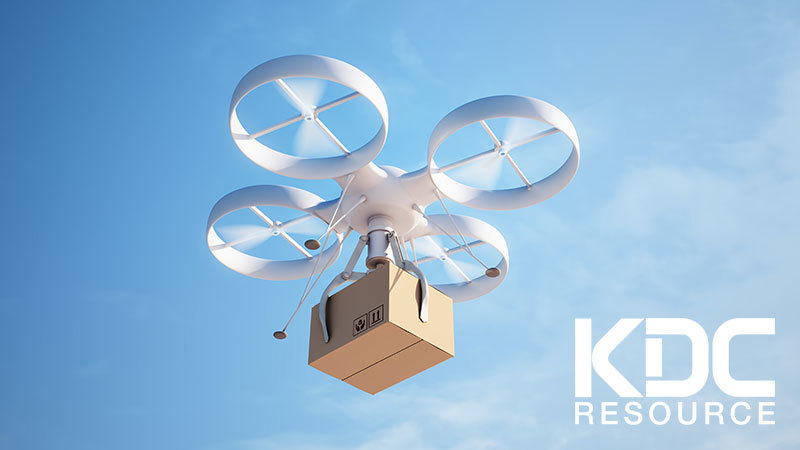

At the beginning of April, UPS announced it was buying its first eVTOL delivery vehicles from Beta Technologies. While this is not a new idea, it marks the first real effort by a delivery company to make this theoretical practice a viable reality. But what does the deal look like and how are other delivery companies leveraging the same technology?
UPS announced it would buy 10 aircraft from Beta Technologies, and that the first delivery is expected by 2024. By the end of the order, UPS may have up to 150 eVTOL vehicles in its fleet along with Beta Technologies’ charging platform. However, no information has been released about the latter part of the deal.
From a logistics perspective, utilising drone technology has the potential to create a much more efficient delivery model. While a single eVTOL aircraft may carry fewer parcels than a single delivery van, it will be able to serve more remote locations at a faster rate. Current electric UPS vans have a cargo capacity of 23 metres cubed, while Beta’s ALIA-250 has a cargo capacity of 640kg.
The ALIA-250 has a range of 250 nautical miles, a wingspan of 15 metres and is powered by a direct-drive electric motor. It uses a multicopter design for its vertical lift and a rear propellor for its horizontal movement. Importantly for UPS, the aircraft has zero operating emissions, meaning it will be much better for the environment than their current fleet of delivery vehicles.
As part of the deal, UPS plans to embed a member of staff in the Beta team, which will theoretically help shift the eVTOL’s design specifically to a logistics market. While Beta may continue to develop other forms of its ALIA-250 design, this implies there will be a specific model for UPS.
UPS is not the only delivery company to leverage eVTOL technology to its advantage. It will come as no surprise that Amazon, the world’s most valuable brand, has its own drone delivery service. Known as Amazon Prime Air, it registered its first autonomous package delivery flight back in 2016.
In August 2020, the service received FAA certification, putting it a step closer to commercial rollout. The company will soon begin more wide-scale commercial testing with its recently-announced drone model. It will be able to deliver parcels weighing 5 pounds or less within 30 minutes.
Similarly, drone delivery company Wing, owned by Google’s parent company Alphabet, also recently received FAA approval. Its model is a short-range one, claiming to deliver packages such as coffee and medication within a 6-mile radius in 6 minutes. Wing will essentially operate as a drone delivery outsourcing company for local businesses and residents, whereas Amazon’s PrimeAir is specifically for Amazon.
On this side of the Atlantic, the Royal Mail is also testing a drone delivery service. Rather than speeding up delivery across the country, it is focusing on improving delivery to remote locations across the UK. At the end of 2020, it pioneered its first test flight to a lighthouse on the remote Isle of Mull.
The Royal Mail has partnered with DronePrep and what3words to ensure speedy and efficient delivery to remote locations. The recipient uses the DronePrep app to scan their property for the best landing location and then uses the integrated what4words function to label this site. Currently, the drone will be released from the local Royal Mail delivery van and will fly autonomously, although this may change in the future.
Currently, drone delivery systems will be something of a gimmick for most users. For something like Amazon, the ability to receive a package within 30 minutes is a matter of convenience, not a necessity. However, Wing’s plan to outsource their services to businesses such as pharmacies has a more obvious and real-world application.
However, the overall benefits for the logistics industry are already obvious and will be game-changing. Even something as simple as delivering parcels to remote locations more efficiently will revolutionise the mail service and will allow postal workers to overhaul their routes.
Similarly, the environmental benefits will be positive. Providing drones are charged using renewable energy, it has the potential to take a large number of delivery vans off the road. While services will need more aircraft than delivery vehicles, services will become faster and more efficient.
This is only the start of the eVTOL revolution in the logistics industry. With big names like UPS and Royal Mail getting on board, it is clear that drone technology will enable a much-needed shift in logistics.